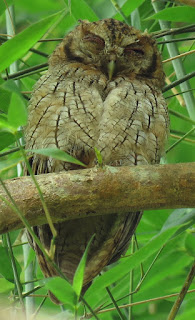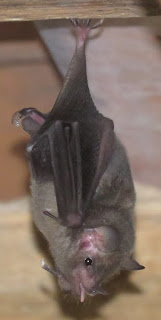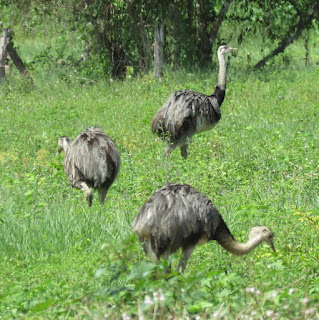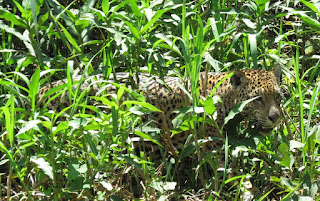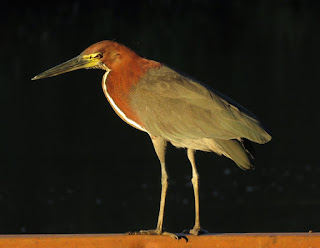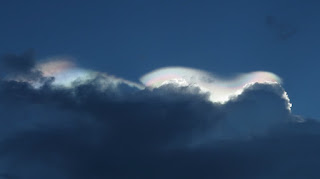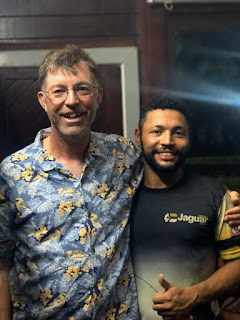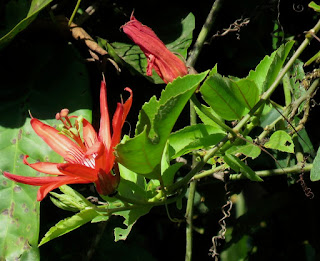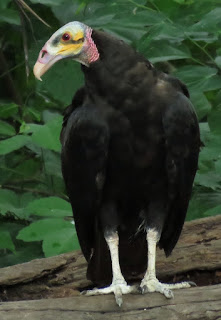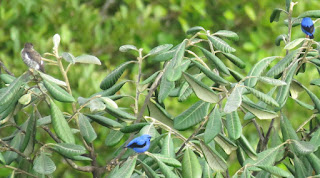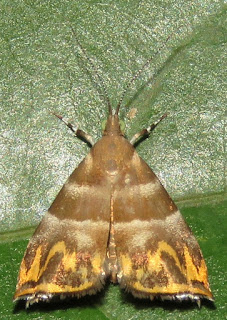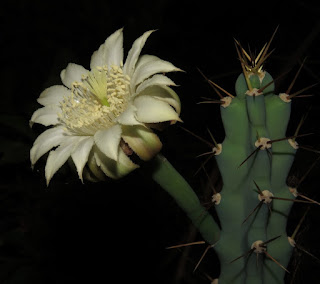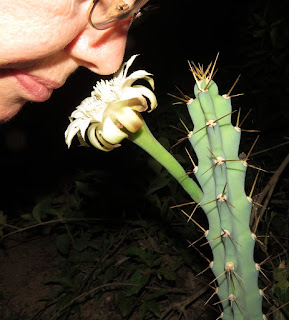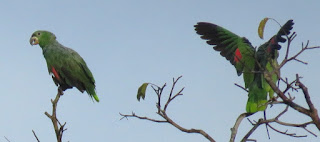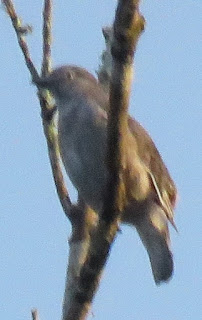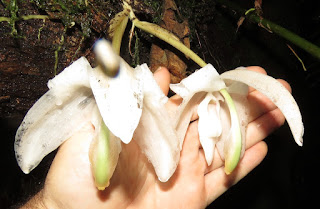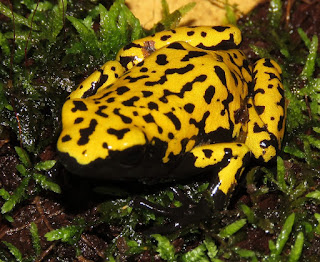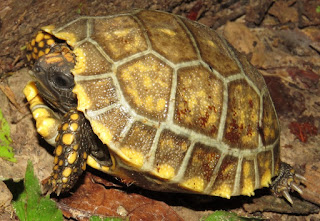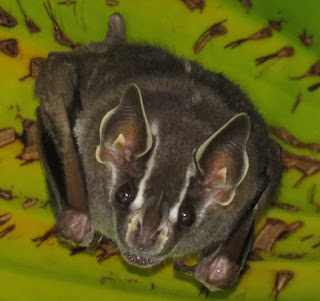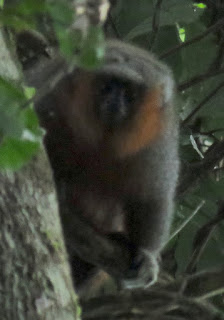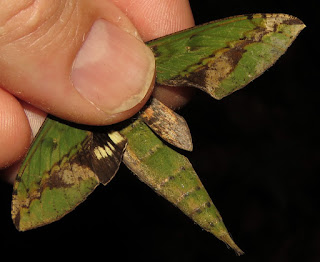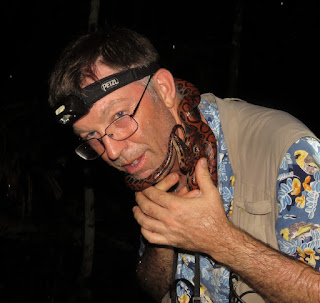January 13-16, 2020
My 50th birthday celebration at Cristalino Jungle Lodge was just five nights, and when planning this whole thing I knew that for most of my friends that wouldn’t be enough time to warrant the long flights to and from Brazil. I also figured that while many would be perfectly capable of organizing their own add-ons (and some did before and after the trip), I could entice a few more to join the group if I organized something for them myself. So I planned a post-Cristalino extension to the Pantanal and Minas Gerais, capping it at 20 (including myself). The itinerary was planned to include some enticements for the non-birders in the group – especially mammals, but also the locations themselves. For my part, I was very interested in seeing these areas I know well in the middle of the rainy season, when bird numbers and their activities might be different than in the dry season, and when plant phenology is likely to be drastically different.
We had much of the first morning at Giuliano and Lisa’s Aymara Lodge. One highlight was this Tropical Screech-Owl in the garden which was tooting away unsolicited in the daylight hours (or maybe it heard my mobbing tape from a few hundred yards away and an hour earlier).
Someone also poked their head in the abandoned building that hasn’t yet been restored and found roosting bats. This one looks just like the ones we identified as Pallas’s Long-tongued Bat, Glossophaga soricina, on my tour a few years ago from just a bit farther south. The genus name means “tongue-eater,” and virtually all online photos are like this one, showing the tongue sticking out of the mouth as if they were in the midst of eating one.
By late morning we were headed south for the long drive to the end of the road at Porto Jofre. We did have time for a few roadside stops. These Greater Rhea were certainly a hit with the group.
Even the non-birders were impressed by this fabulous Scarlet-headed Blackbird.
Finally at the end of the road, we boarded our two boats to head upriver to our lodge for the next three nights. We were told it would be a minimum of 50 minutes, possibly up to 30 minutes longer if we made stops.
But wait – Tim left his spotting scope on the bank by the buses; good thing our driver Rogerio noticed!
Finally, after more than two hours, we arrived at Pousada Recanto do Jaguar, but shortly before arriving the lead boatman spotted a jaguar swimming across the river. Most of the group got to see it – but not everyone, and we never did see more than its head out of the water – all too soon it went up into some low overhanging willows and disappeared.
For the next two full days we took boat rides out into the Pantanal – on the Rio Tres Irmãos, Rio Cuiabá, and various tributaries and channels that connected the two.
Late on the first morning, we finally connected with our number one target: Panthera onca! This one was extremely cooperative, and we were able to spend more than 20 minutes with her. I was later able to find out from Paul Donahue that her name is Ibaca.
This freed us up to explore the region the rest of our stay, while also hoping for another jaguar. We passed by this huge Cocoi Heron heronry. When I come here on my tours, we don’t see them nesting, but then again I’d never been this far upriver.
This Rufescent Tiger-Heron was in just perfect light on the dock at the lodge.
This was the middle of the rainy season, and though it was still a few weeks away from the typically highest river levels, word was that the water was extremely low for this time of year. Perhaps that helped our chances for seeing jaguar, but we did not find another one on these boat rides. There was some nice thunderstorm action, in any event, making for beautiful skies. Take this incredible irisation above the cumulonimbus clouds.
We had great hosts during our stay. This is a low season for them, so I’m sure they were glad to have us in any event. This Junior, the super friendly bar tender, server, and general helper.
We got word from Giuliano that one of the rickety bridges that we would have cross on our return had been damaged by one of the many heavy trucks laden with cattle, as the ranchers were preparing for the upcoming high water levels by trucking them to higher ground. To fix it, a crew would be arriving at dawn the next day, dismantling and rebuilding it, taking all day. That would strand us here, causing us to miss our flight to Belo Horizonte! Later in the evening he came up with a plan: He negotiated with the crew to postpone their dismantling the bridge until 8:00 a.m. instead of 5:00 a.m. It would be about 3 1/2 hours travel time from our lodge, so we departed at 4:00 a.m. At one point, when Mich spotted eyeshine that clearly was not a caiman or potoo, he screamed for the boat to stop, and we had dim views of a very large Jaguar sitting on the bank well behind a curtain of foliage!
Apparently the bridge wasn’t so damaged that we couldn’t drive across it, which was a surprise to me (I thought we’d have to walk across, transferring our bags by hand to a waiting pair of new vans), but it did mean that we had to rush there, driving through some of the best birding in the Pantanal, without stopping, during the best time of day. We flushed dozens of all four species of cracids (Bare-faced Curassow, Chestnut-bellied Guan, Blue-throated Piping-Guan, and Chaco Chachalaca), hundreds of White-tipped Doves, and waved goodbye to all the Limpkins, Jabirus, and Southern Screamers along the roadside. One good catch was a White-headed Marsh-Tyrant by a bridge as we drove slowly across it. After crossing the damaged bridge, we had plenty of time for some stops in the middle stretches of the road, and at one stop we had Hook-billed Kite and a very rare Rufous-thighed Kite at the very same time.
A new passionflower for me was this Passiflora quadriglandulosa (with thanks to Yero Kuethe for the ID).
Also new for me was this spectacular milkweed vine, Schubertia grandiflora.
For the non-birders we added some nice mammals. This Marsh Deer, Blastocerus dichotomus, was cooperative.
On the entrance road to Aymara Lodge, where we returned for lunch, was this incredible Brazilian Tapir, Tapirus terrestris, unusual in being out in the open in the middle of the day. That it was unafraid of our vehicles a few feet away wasn’t so unusual.
At the lodge this Lesser Yellow-headed Vulture might have been inspecting the compost pile, or perhaps it had a nest in the nearby forest patch.
A Gray-headed Kite – our third “kite” (despite the name, they’re not closely related and probably just should have been named hawks) for the day was also a great find.
Finally, as we were finishing lunch, I heard a vaguely familiar sound in the trees overhead the dining room. There were a pair of Hyacinth Macaws getting all lovey-dovey with each other, oblivious to the crowd that was gathering below.
Finally, it was time return to Cuiabá for an early night to bed for tomorrow we would have a very early start. We made a stop to snap this Ringed Kingfisher just outside the van windows.
And of course there was the obligatory group photo at the Pantanal entrance sign.
